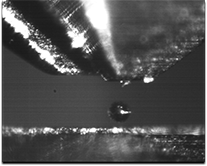
Giovanna Truong (YC’2023 Physics-Intensive major) presented her work at the Rosenfeld Science Scholars Symposium on Wednesday, September 22, 2021. Her presentation was on “Characterizing the Vibrational Modes of a Magneto-Gravitational Trap”.
Truong states, “Over the summer, I worked in Jack Harris’s lab on the water levitation project. I was funded by the Rosenfeld Science Scholars Fellowship (a promotion of my application from the Yale College Dean’s Research Fellowship to a higher stipend level). This event was a presentation to the other Rosenfeld Scholars and some first-year researchers (including in STARS, I believe). We also got to meet the Rosenfeld family and show them what an impact their donation had made! I had a lot of fun. I was chosen to give a talk (others, including our own Ema Smith, did poster presentations). The event ran virtually.
The Rosenfeld Science Scholars program seeks to promote the academic development of promising students through engagement in original scientific research and provide fellowship support for undergraduate STEM research projects. Awardees will be selected from among currently enrolled sophomores and juniors. Applicants may be pursuing a degree in any major offered by Yale College, but must be proposing research in the natural sciences, engineering, mathematics, and computer science.
Abstract: Pure water has been hypothesized and demonstrated to have separate “supercooled” phases below 0 before it freezes. An isolated environment is preferred to study supercooled water, as impurities, solid walls, and vibrations all tend to destroy the supercooled phase by causing nucleation and a transition to ice. To isolate water from its surroundings, we plan to use a magneto-gravitational trap that stably levitates diamagnetic materials, including silica (SiO2) and water. The resonant frequency of the trap depends on its spatial geometry. We characterized the trap by levitating silica microspheres of 53–63 μm in diameter and casting their shadows on a lateral effect sensor using a laser. We found that the microspheres responded at the first order harmonic of an AC drive due to static net charges on their surfaces. The resonant frequencies we demonstrated align with those predicted by previous work, with resonances between 10 and 150 Hz for the three principal axes of the trap. The microspheres also responded at twice the drive frequencies due to their dielectric nature. These results indicate the reliability of the magneto- gravitational trap and lay the groundwork for our future water droplet levitation experiment.